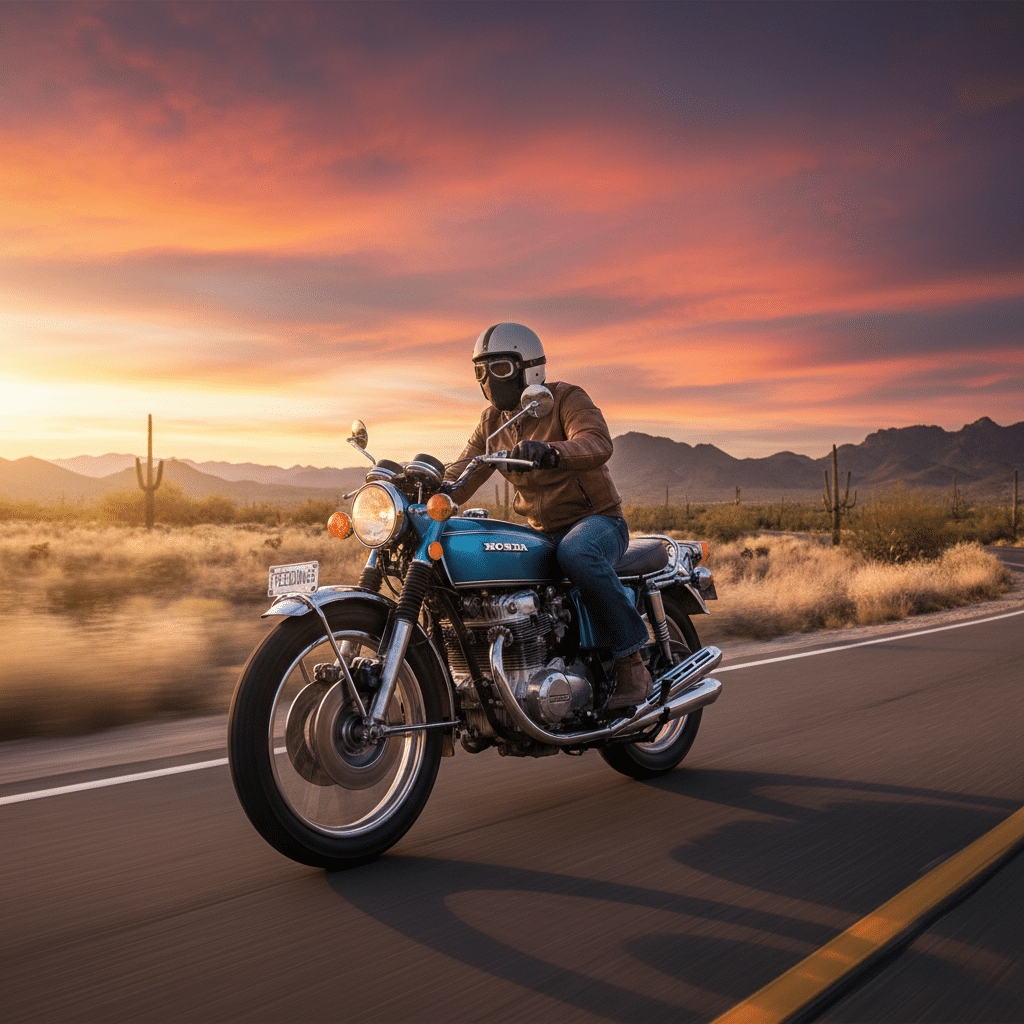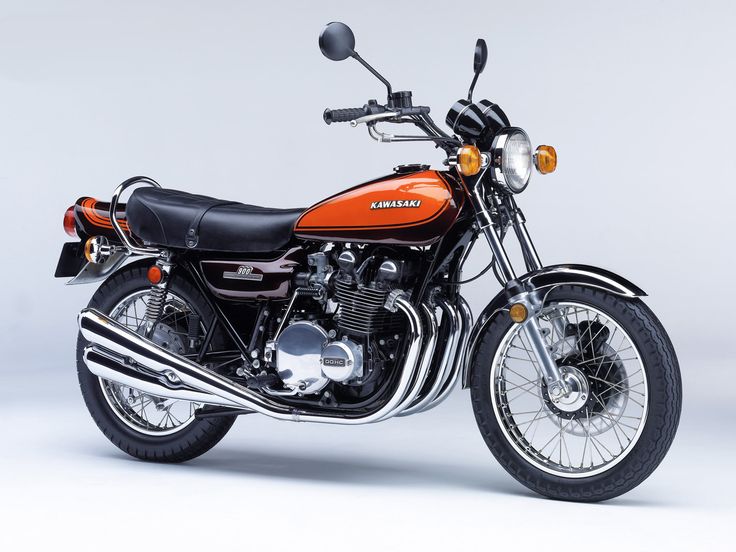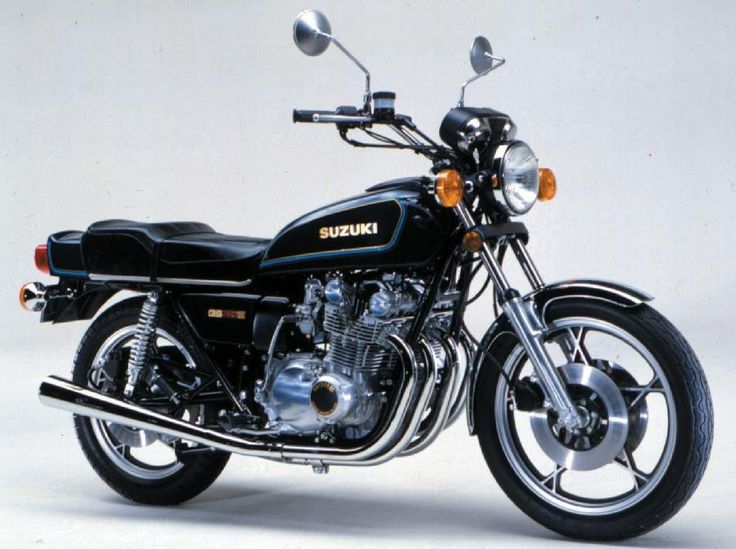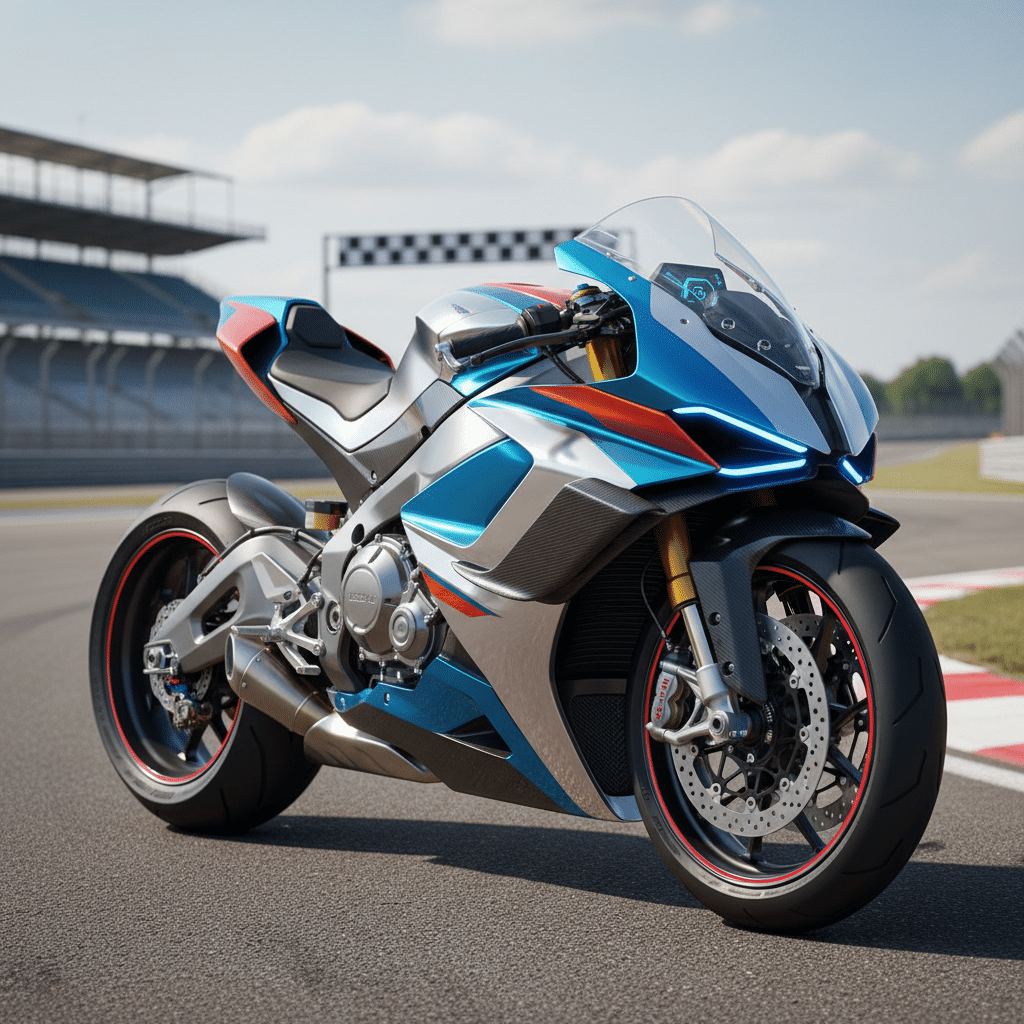From the roaring heart of an engine to the razor-sharp precision of a chassis, there’s a certain magic that surrounds superbikes. These aren’t just motorcycles; they are two-wheeled manifestations of speed, power, and cutting-edge technology, born from an insatiable desire to push the boundaries of what’s possible. The development of superbikes is a captivating saga of innovation, competition, and pure passion, a journey that has transformed humble beginnings into the breathtaking machines we see dominating roads and racetracks today. Prepare to ignite your own passion as we dive deep into the thrilling evolution of these incredible machines, exploring the milestones, the engineering marvels, and the sheer audacity that defines the superbike legacy.
The Genesis of Speed: Defining the Early Superbike Era
To truly appreciate the modern superbike, we must first journey back to its roots. While high-performance motorcycles existed before, the term “superbike” truly began to coalesce in the late 1960s and early 1970s. This was a time when manufacturers started to fuse powerful, multi-cylinder engines with relatively lightweight frames, aiming for exhilarating speed and dynamic handling previously unseen in production bikes. It wasn’t just about raw power; it was about the harmonious integration of components designed for a singular purpose: performance.
Before this era, motorcycles were largely utilitarian or sporty but lacked the distinct “super” prefix. Think of the British twins and triples – Norton Commandos, Triumph Bonnevilles – legendary machines, no doubt, but they often struggled with reliability or weren’t designed from the ground up to achieve blistering top speeds and race-winning agility straight off the showroom floor. The seed of the superbike was planted when engineering ambitions started to truly outpace conventional design.

The Japanese Revolution: Ushering in a New Era of Performance
The real game-changer arrived with the Japanese manufacturers. Honda, Kawasaki, Suzuki, and Yamaha didn’t just join the motorcycle market; they redefined it. Their approach combined meticulous engineering, mass-production efficiency, and an audacious vision for performance.
Honda’s Groundbreaking CB750

In 1969, Honda unleashed the CB750 Four, a machine that many consider the first true superbike. It wasn’t the fastest or most powerful bike ever made, but it was revolutionary. Its inline-four engine offered a level of smoothness and reliability that was previously unheard of. With its front disc brake, electric starter, and a top speed approaching 125 mph, the CB750 democratized high performance. It set a new benchmark for what a production motorcycle could be, offering an intoxicating blend of power, sophistication, and — critically — dependability. This bike wasn’t just fast; it was usable, dependable, and accessible, fundamentally altering public perception of what a large-capacity motorcycle could offer.
Kawasaki’s Untamed Beasts

Not to be outdone, Kawasaki quickly entered the fray with a more aggressive philosophy. Their 1972 Z1 900 was a direct response to the CB750, pushing the horsepower envelope further with its 903cc engine, making it the most powerful production motorcycle of its time. The Z1 cemented Kawasaki’s reputation for building untamed, visceral machines. Later, models like the GPZ900R in the mid-80s would continue this tradition, marrying formidable engines with increasingly sophisticated chassis technology.
Suzuki and Yamaha’s Contributions


Suzuki contributed with its GS series, known for their robust engines and excellent handling characteristics, while Yamaha’s offerings, like the XS1100, also brought formidable power to the burgeoning superbike class. This era saw a rapid escalation in engine size and power output, laying the foundation for the horsepower wars that would define superbikes for decades to come. The competition spurred incredible innovation, making superbikes not just faster, but also more refined and technologically advanced with each passing year.
The Golden Age of Speed: Horsepower Wars and Technological Leaps (1980s-1990s)
The 1980s and 1990s marked a period of explosive growth and intense competition in the superbike world. This was when superbikes truly came into their own, evolving from powerful roadsters into highly specialized performance machines. The drive was relentless: more horsepower, lighter weight, and sharper handling.
Frame and Suspension Evolution
Manufacturers began to move away from traditional steel double-cradle frames towards stiffer, lighter aluminum perimeter frames. This shift drastically improved rigidity and allowed for more precise suspension tuning. Single-sided swingarms and upside-down front forks, once exclusive to racing machines, began to appear on production superbikes, enhancing stability and feedback. The constant quest for better grip and control led to significant advancements in tire technology, turning once-sketchy high-speed handling into a confidence-inspiring experience.
Engine Refinements and Forced Induction
Engine technology continued its rapid ascent. Fuel injection started to replace carburetors, offering more precise fueling, better throttle response, and improved emissions. Multi-valve cylinder heads, liquid cooling, and lighter internal components allowed engines to rev higher and produce more power without sacrificing reliability. Some manufacturers even experimented with forced induction, notably Kawasaki with its GPZ750 Turbo, a testament to the era’s no-holds-barred approach to performance.
Italian Flair and European Engineering
While Japan dominated the volume, European manufacturers, particularly in Italy, continued to carve out their niche with distinct styling and engineering philosophies. Ducati, with its iconic desmodromic V-twin engines and trellis frames, offered a unique riding experience defined by torque, sound, and unparalleled charisma. Their homologation specials, often designed with World Superbike racing in mind, became legendary. These European contenders provided a vital alternative, emphasizing art and emotion alongside raw speed.

Pros and Cons
Superbikes, while exhilarating, come with their own set of advantages and disadvantages. Understanding these can help enthusiasts appreciate the full spectrum of the superbike experience.
| Pros | Cons |
|---|---|
| – Exhilarating Performance: Unmatched acceleration, top speed, and agility. | – High Purchase Cost: Generally expensive to buy new. |
| – Cutting-Edge Technology: Often features the latest in electronics and engineering. | – High Insurance & Maintenance: Can be costly to insure and maintain, especially complex components. |
| – Precise Handling: Engineered for track-level cornering and responsiveness. | – Uncomfortable Ergonomics: Often aggressive riding positions, not ideal for long distances. |
| – Strong Community & Culture: Part of a vibrant enthusiast culture. | – Excessive Power for Road Use: Much of their performance is unusable on public roads. |
| – Stunning Aesthetics: Designed with aerodynamic beauty and aggressive styling. | – Safety Concerns: High performance demands significant rider skill and respect. |
The Digital Revolution: Electronics Take the Helm (2000s-Present)
The turn of the millennium heralded a new era where horsepower alone was no longer enough. The challenge became how to effectively manage that power and translate it into usable speed. This led to the rapid integration of sophisticated electronic rider aids, transforming superbikes into intelligent machines.
Traction Control and ABS
Early 2000s saw the introduction of rudimentary traction control systems. These evolved quickly, using sensors to monitor wheel speed and lean angle, adjusting engine output to prevent wheelspin. Simultaneously, Anti-lock Braking Systems (ABS) became commonplace, dramatically improving braking safety and control, especially in adverse conditions. For insights into riding in challenging conditions, consider these tips for riding a motorcycle in the rain and wet weather.
Ride-by-Wire and Multiple Riding Modes
The adoption of ride-by-wire throttle systems opened the door for multiple riding modes, allowing riders to switch between full power, sport, road, or rain settings with the touch of a button. This system, devoid of mechanical cables between the throttle and engine, enabled precise electronic control over engine parameters, fuel mapping, and ignition timing.
Inertial Measurement Units (IMUs)
The real game-changer came with the Inertial Measurement Unit (IMU). These compact sensors detect a motorcycle’s position and movement in six axes (pitch, roll, yaw, and their corresponding rates of change). The IMU’s data feeds into the bike’s ECU, allowing for lean-sensitive traction control, cornering ABS, wheelie control, slide control, and even launch control. This level of electronic sophistication effectively made superbikes safer and faster for a wider range of riders. The complexity of these systems highlights the ongoing evolution from purely mechanical marvels to highly integrated cyber-mechanical systems.

Materials Science and Aerodynamics: The Pursuit of Efficiency
Beyond engines and electronics, the relentless pursuit of performance has driven incredible advancements in materials science and aerodynamics. Every gram shed and every ounce of drag reduced contributes to a faster, more agile machine.
Lightweight Materials
The modern superbike is a showcase of exotic materials. Aluminum alloys remain prevalent for frames and swingarms, but carbon fiber has become increasingly common for fairings, wheels, and structural components due to its incredible strength-to-weight ratio. Magnesium, titanium, and other exotic alloys are used for engine internals and chassis components, further reducing unsprung weight and rotating mass. The impact of advanced materials like carbon fiber changing the game in motorsport is undeniable, allowing for lighter, stiffer, and more durable components across the board.
Aerodynamic Dominance
Aerodynamics has transitioned from being an afterthought to a critical design element. Fairings are meticulously sculpted in wind tunnels to reduce drag, improve high-speed stability, and manage airflow for engine cooling. More recently, aggressive winglets – initially seen only in MotoGP – have migrated to production superbikes. These downforce-generating appendages provide crucial front-end grip during acceleration and cornering, helping to keep the front wheel planted as immense power is delivered to the ground. This reflects a direct transfer of technology from the pinnacle of racing to the road, a fascinating aspect of superbike development.
Racing as the Ultimate Testbed: From Track to Tarmac
Motorsport is not merely entertainment; it’s the crucible in which superbike technology is forged. The brutal demands of racing push engineers to their limits, forcing innovations that eventually trickle down to production models.
MotoGP and World Superbike (WSBK)
The most direct lineage for superbike development comes from two primary racing series: MotoGP and the Superbike World Championship (WSBK). MotoGP, with its prototype machines, is where the absolute bleeding edge of technology is developed. Many of the electronic rider aids, aerodynamic concepts, and advanced materials we see on today’s production superbikes were first tested and refined in the white-hot heat of MotoGP competition. The sheer engineering prowess behind machines like the Honda RC211V and MotoGP innovation is legendary, directly influencing future road-going models.
WSBK, on the other hand, is a championship for highly modified production motorcycles, creating a direct feedback loop between the racetrack and the showroom. Success in WSBK is a powerful marketing tool and a testament to a manufacturer’s engineering capabilities. The intense rivalry between manufacturers in these series accelerates development cycles, driving advancements in engine performance, chassis dynamics, and electronic control systems. Understanding the nuances, such as MotoGP vs. World Superbike: What’s the Difference?, illuminates how both contribute to the overall evolution of superbikes.
The intense pressures of competition, from qualifying laps to race finishes, expose any weaknesses and highlight areas for improvement, directly benefiting the superbikes that riders can buy. This symbiotic relationship between racing and road bikes ensures that the evolution of superbikes is constantly pushed by the most demanding environment imaginable.
The Future of Superbikes: Electric Dreams and Intelligent Machines
What does the horizon hold for superbikes? The trajectory suggests even greater integration of technology, a shift towards sustainability, and potentially, a redefinition of performance itself.
Electric Superbikes
The most significant disruption is undoubtedly the rise of electric motorcycles. While traditional internal combustion engines (ICE) still dominate, electric superbikes are rapidly advancing, offering instant torque, silent operation, and emissions-free performance. Brands like Zero and Energica are already producing high-performance electric motorcycles, and competitive racing series for electric bikes, such as MotoE, are further accelerating their development. The potential for electric motorcycles in competitive racing is immense, providing a glimpse into a high-performance, sustainable future. Battery technology and charging infrastructure are key areas of focus, promising longer ranges and faster replenishment times.
Artificial Intelligence and Connectivity
Expect to see AI play a more significant role in future superbikes. Adaptive suspension systems that learn and adjust to rider style and road conditions in real-time are becoming a reality. Connectivity features, like smartphone integration for navigation, telemetry, and even predictive maintenance, will become standard. Imagine a superbike that can proactively warn you about potential issues or suggest optimal riding lines based on your skill level and track data.
Sustainable Performance and New Materials
Beyond electric power, manufacturers will continue to explore sustainable materials and production processes. Bio-composites and recycled materials could find their way into superbike construction. The focus will shift not just to raw speed, but to a more holistic performance that includes environmental responsibility. Autonomous emergency braking, advanced rider assistance systems (ARAS), and vehicle-to-vehicle communication could also enhance safety, bringing levels of intelligence previously unimagined to the world of two wheels.
The Enduring Impact: More Than Just Metal and Motors
The development of superbikes is more than just a timeline of technological advancements; it’s a testament to human ingenuity and our enduring love affair with speed and precision. These machines inspire awe, ignite passion, and push riders to hone their skills. They create communities, fuel dreams, and define an entire segment of motorsport culture.
Riding a superbike is a visceral experience, a symphony of power, sound, and sensation. It connects the rider to the road in a way few other vehicles can. From the thrill of a perfectly executed corner to the surge of acceleration, superbikes tap into something primal within us. They represent freedom, mastery, and the relentless pursuit of excellence. The impact these bikes have on our riding culture, influencing everything from gear design to track day popularity, is profound.
Conclusion
The journey of superbikes, from the pioneering CB750 to today’s electronically sophisticated, aerodynamically sculpted marvels, is a thrilling narrative of evolution. It’s a story fueled by engineers, racers, and enthusiasts alike, all striving to create the ultimate two-wheeled performance machine. We’ve witnessed dramatic leaps in engine power, chassis dynamics, electronic intelligence, and materials science, each milestone pushing the boundaries of what riders believed was possible.
As we look ahead, the path is clear: superbikes will continue to innovate, embracing electric propulsion, artificial intelligence, and new sustainable materials, all while retaining their core identity as breathtaking machines designed for unparalleled performance. This exciting trajectory ensures that the thrill, passion, and sheer exhilaration associated with superbikes will continue to ignite imaginations for generations to come. So, whether you’re a seasoned rider or an aspiring enthusiast, embrace the spirit of innovation and let the roar of these magnificent machines fuel your own passion for the open road.
Frequently Asked Questions
What defines a superbike?
A superbike is generally defined by its high-performance engine (typically 600cc to over 1000cc, often inline-four or V-twin configurations), lightweight and rigid chassis, advanced suspension, powerful braking systems, and aerodynamic fairings, all designed for maximum speed, acceleration, and handling on both road and track.
Who is credited with creating the first superbike?
While the term “superbike” is debated, many enthusiasts and historians consider the 1969 Honda CB750 Four to be the first true superbike due to its revolutionary combination of high performance, multi-cylinder reliability, advanced features like a front disc brake, and widespread accessibility.
How have electronics transformed superbikes?
Electronics have revolutionized superbikes by making their immense power more manageable and safer. Features like ride-by-wire throttle, multiple riding modes, traction control, ABS, wheelie control, and lean-sensitive cornering systems (enabled by Inertial Measurement Units or IMUs) allow riders to extract more performance and control in various conditions.
What role does racing play in superbike development?
Racing series like MotoGP and the Superbike World Championship (WSBK) serve as critical testbeds for superbike technology. Innovations in engine design, chassis materials, aerodynamics, and electronic rider aids are developed and refined under extreme competitive pressures, with many of these advancements eventually trickling down to production models.
Are electric superbikes the future?
Electric superbikes are rapidly emerging as a significant part of the future of high-performance motorcycling. With advancements in battery technology, motor efficiency, and charging infrastructure, they offer instant torque, emissions-free operation, and a new dimension of performance that will continue to evolve and challenge traditional internal combustion engine superbikes.
Why are superbikes often considered uncomfortable for long rides?
Superbikes typically feature aggressive ergonomics designed for optimal control and aerodynamics at high speeds. This often means a forward-leaning riding position, high footpegs, and low handlebars, which can put significant strain on the wrists, back, and neck over extended periods, making them less ideal for touring or long-distance comfort.



